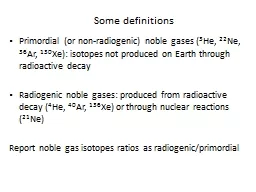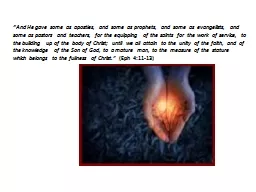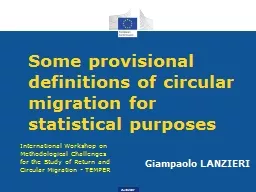PPT-Some definitions
Author : olivia-moreira | Published Date : 2017-06-01
Primordial or nonradiogenic noble gases 3 He 22 Ne 36 Ar 130 Xe isotopes not produced on Earth through radioactive decay Radiogenic noble gases produced from
Presentation Embed Code
Download Presentation
Download Presentation The PPT/PDF document "Some definitions" is the property of its rightful owner. Permission is granted to download and print the materials on this website for personal, non-commercial use only, and to display it on your personal computer provided you do not modify the materials and that you retain all copyright notices contained in the materials. By downloading content from our website, you accept the terms of this agreement.
Some definitions: Transcript
Download Rules Of Document
"Some definitions"The content belongs to its owner. You may download and print it for personal use, without modification, and keep all copyright notices. By downloading, you agree to these terms.
Related Documents













![(BOOS)-Some We Love, Some We Hate, Some We Eat [Second Edition]: Why It\'s So Hard to](https://thumbs.docslides.com/944439/boos-some-we-love-some-we-hate-some-we-eat-second-edition-why-it-s-so-hard-to-think-straight-about-animals.jpg)
![[READ]-Some We Love, Some We Hate, Some We Eat [Second Edition]: Why It\'s So Hard to](https://thumbs.docslides.com/958172/read-some-we-love-some-we-hate-some-we-eat-second-edition-why-it-s-so-hard-to-think-straight-about-animals.jpg)